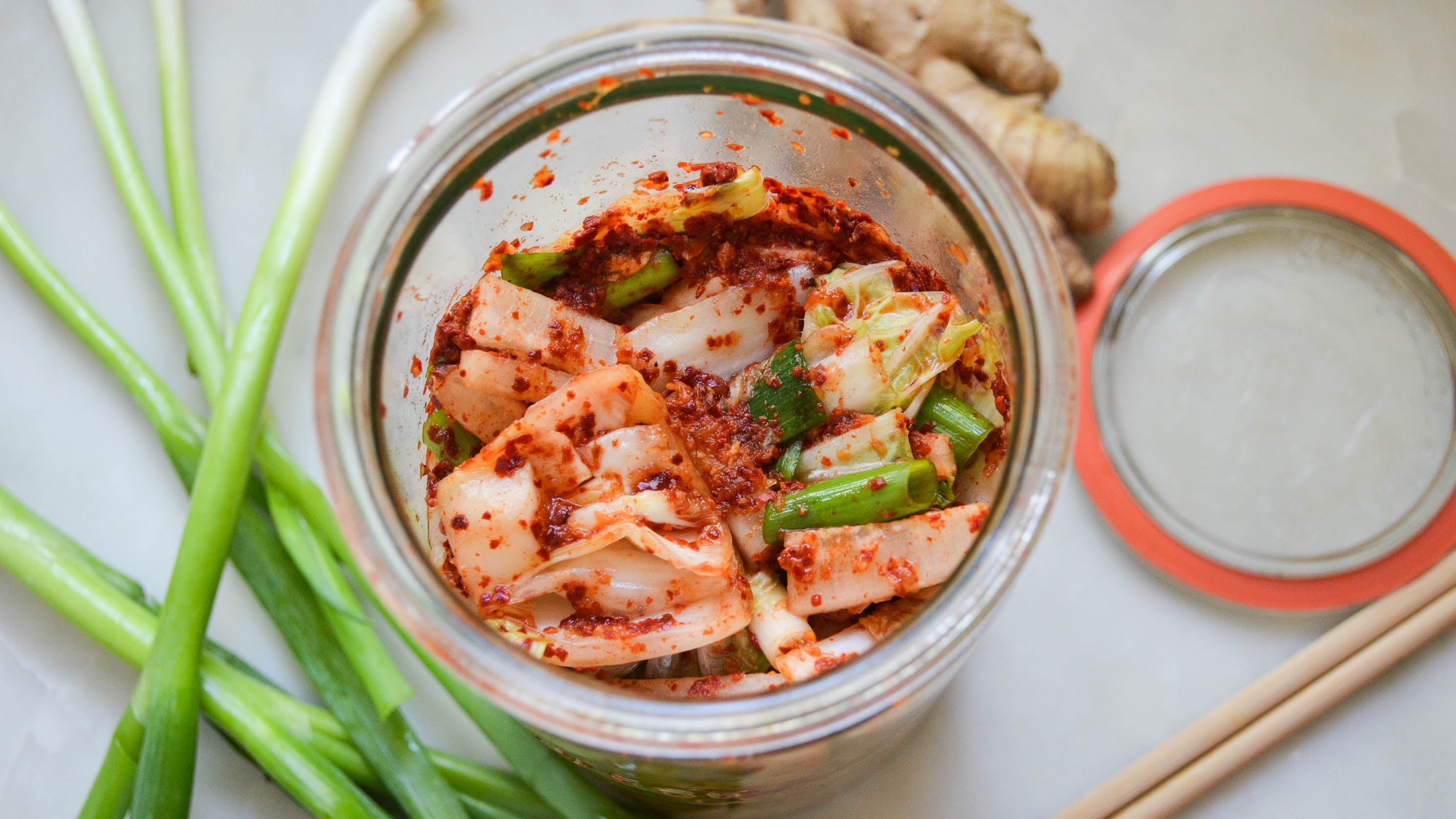Quick Kimchi

COMMENTS
-
Erica Perez on
Hi Kelsey,
You can keep kimchi for 3-6 months in the refrigerator. -
Kelsey Woodward on
How long can you keep kimchi in refrigerator?
This site has limited support for your browser. We recommend switching to Edge, Chrome, Safari, or Firefox.
FREE shipping on orders of $50 or moreFREE shipping will be applied at checkout
Spend $50 more for FREE shipping!FREE shipping will be applied at checkout
Sorry, looks like we don't have enough of this product.


By Linda Shiue
Rated 5.0 stars by 1 users
By Linda Shiue
Yield: 2 quarts
This text and recipe is posted with permission from Spicebox Kitchen by Linda Shiue, MD.
From the author: Kimchi is an icon of Korean cuisine, eaten both as an accompaniment to pretty much anything, or as an ingredient to add tremendous flavor to such things as fried rice, kimchi jjigae (kimchi stew), and more. The traditional method of making kimchi is laborious and time-consuming (and the recipes are tightly held family secrets).
This version is a slightly streamlined recipe (the brining time is shorter, the cabbage leaves are cut before fermenting, and fish sauce is used rather than whole seafood), but I think you’ll find it better than many versions you can buy. For a vegan version, use a vegetarian fish sauce or substitute 3/4 teaspoon kelp powder mixed in 2 tablespoons water.
1/4 cup Pacific flake sea salt
1/4 cup Gochugaru

Hi Kelsey,
You can keep kimchi for 3-6 months in the refrigerator.
How long can you keep kimchi in refrigerator?



I made this! It was good…I may have overpacked the ginger but it mellowed. I think I like garlic prominent…it was hot, but not too hot…